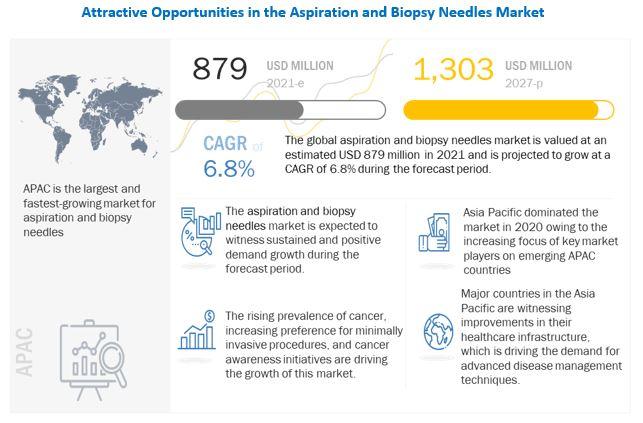Globally, there has been a significant increase in the number of people suffering from cancer. This can be attributed to a number of factors, such as lifestyle changes, unhealthy diets, and increasing tobacco consumption. According to estimates from the International Agency for Research on Cancer (IARC), in 2018, there were 17.0 million new cancer cases and 9.5 million cancer deaths worldwide.
The incidence of cancer is the highest in more-developed regions, but mortality is relatively higher in less-developed countries due to a lack of access to treatment facilities and a lack of awareness regarding the benefits of early detection. According to the American Cancer Society, about 9.6 million people die from cancer every year, and 70% of cancer deaths occur in low-to-middle income countries such as China and India; these proportions are expected to increase further by 2025.
With the rising prevalence of cancer in major regions across the globe, the demand for effective cancer diagnosis is expected to increase in the coming years. This, in turn, is expected to support the growth of the aspiration and biopsy needles market during the forecast period.
Download PDF Brochure @ https://www.marketsandmarkets.com/pdfdownloadNew.asp?id=71036825

With the growing awareness about different types of cancers, the demand for biopsy procedures is expected to increase in the coming years. However, there is a dearth of skilled surgeons to perform minimally invasive biopsy procedures. For instance, a shortage of more than 2,300 medical oncologists is expected in the US by 2025 (Source: Journal of Global Oncology).
The effect of this factor will be more pronounced in developing and underdeveloped regions. For instance, one of the major obstacles in the delivery of care for patients with curable cancers in the Sub-Saharan African region is the dearth of medical oncologists, radiation oncologists, and other healthcare workers required for cancer care.
Asia Pacific commanded the largest share of the aspiration needles market in 2020. Increasing initiatives by government for the cancer diagnostics and screening, rising research activity, and the high incidence of cancer in key APAC countries such as India and China are the major factors driving the growth of this regional market.